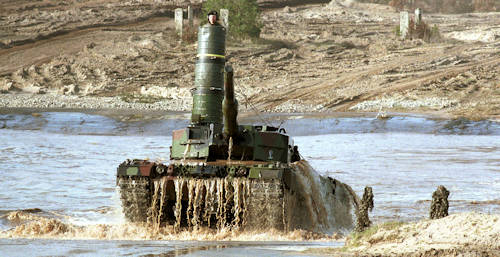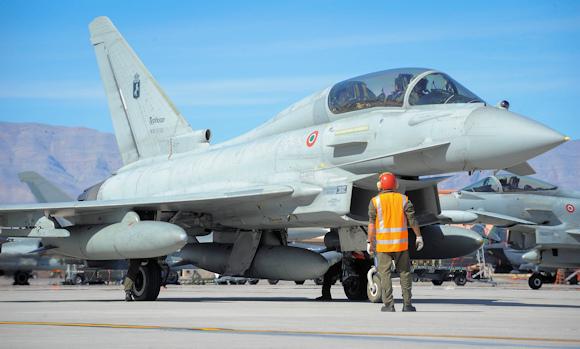With the cold and rational style that distinguishes 4 last June, in full electoral campaign, Emmanuel Macron kept a speech on defense in which he marginalized the role in NATO in the French future ("a defensive alliance that has become aggressive", in his words) and contextually emphasized the need for a true European defense integration.
The US accusation of wanting to change the purpose and spirit of the alliance is not new to French politics and echoes from General De Gaulle's criticisms of those addressed by President Jacques Chirac to George W. Bush. It is no coincidence that France, since the 60 years, has been the engine of European defense integration, starting with the Fouchet plan of the 60 years (never arrived in port), passing through the meeting of Saint -Malo between Tony Blair and Chirac and coming to the impulse given by Paris in defining the new tasks of European External Action in the Lisbon Treaty.
Can the new transatlantic crisis that is taking place between Europe and the United States, centered precisely on NATO's future and present role, be an opportunity for a relaunch for a wider continental cooperation on defense? The choice to proceed on this path may not be optional. The states of the European Union as a whole spend exactly half of the United States in the sector today, but the comparative efficiency of investments is not half, but is around 25%. This means that the multiplication of suppliers, unfinished projects and the scarce ambition possible with projects developed unilaterally by European nations lead to a loss of competitiveness that is now unacceptable, especially in an unstable world in which new hot scenarios have opened up all around the continent, particularly to the east of the Vistula and on the southern shore of the Mediterranean. As if that were not enough in recent years, thanks to the economic crisis, all European countries have had to constantly cut expenses for the sector. Suffice it to say that in 2017 a total of 20 Defense was spent in Europe billions less than in 2007, a drastic and sometimes worrying drop.
 Apart from a few individual initiatives, for example in Eastern Europe, it seems that this trends it is not reversing, given for example the French announcement of a reduction of further 800 million destined for the Armed Forces in the next financial (a decision that has caused numerous controversies, including the resignation of Chief of Staff Pierre de Villiers - v.articolo). The decrease in European support also in the Nato area has led to the harsh reprimand of President Trump and has helped to trace a new furrow across the Atlantic. Europeans are therefore in a difficult situation and the only option seems to be to spend the few resources available for some continental defense priorities. Starting from these considerations, we can well understand the Franco-German acceleration this summer for a new ambitious plan for joint development of armaments. The last May 18 Angela Markel and the new Elysée tenant, Emmanuel Macron, at the end of a bilateral meeting announced some guidelines for joint joint action. The first seems to concern the aeronautical sector and in particular the study of a new one Euro Fighter of the fifth generation that reproduces the European consortium of the 90 years which led to the development of the famous interceptor fighter. An important change from the previous consortium would be the replacement of the British BAE Systems with another supplier of electronic systems, presumably French. In this way the original idea of involving Paris in the development of a new European fighter would be recovered, a failed experiment in the first version of theEuro Fighter for numerous misunderstandings that lead France to withdraw from the project to develop the bomber fighter Flurry.
Apart from a few individual initiatives, for example in Eastern Europe, it seems that this trends it is not reversing, given for example the French announcement of a reduction of further 800 million destined for the Armed Forces in the next financial (a decision that has caused numerous controversies, including the resignation of Chief of Staff Pierre de Villiers - v.articolo). The decrease in European support also in the Nato area has led to the harsh reprimand of President Trump and has helped to trace a new furrow across the Atlantic. Europeans are therefore in a difficult situation and the only option seems to be to spend the few resources available for some continental defense priorities. Starting from these considerations, we can well understand the Franco-German acceleration this summer for a new ambitious plan for joint development of armaments. The last May 18 Angela Markel and the new Elysée tenant, Emmanuel Macron, at the end of a bilateral meeting announced some guidelines for joint joint action. The first seems to concern the aeronautical sector and in particular the study of a new one Euro Fighter of the fifth generation that reproduces the European consortium of the 90 years which led to the development of the famous interceptor fighter. An important change from the previous consortium would be the replacement of the British BAE Systems with another supplier of electronic systems, presumably French. In this way the original idea of involving Paris in the development of a new European fighter would be recovered, a failed experiment in the first version of theEuro Fighter for numerous misunderstandings that lead France to withdraw from the project to develop the bomber fighter Flurry.
 The second joint development direction announced by the two heads of state is the development of a new armored vehicle. For years now in Europe we have been wondering about the future of Leopard 2 (photo) and on the possibility of overcoming simple updates to arrive at the development of a true new generation wagon. The European need to update the successful product of the German Krauss-Maffei became more pressing after the presentation of the Russian wagon Armata, which will probably be mass-produced next year. It is easy to imagine a German protagonism on this project, but in what way we can or want to involve the other continental partners is unknown.
The second joint development direction announced by the two heads of state is the development of a new armored vehicle. For years now in Europe we have been wondering about the future of Leopard 2 (photo) and on the possibility of overcoming simple updates to arrive at the development of a true new generation wagon. The European need to update the successful product of the German Krauss-Maffei became more pressing after the presentation of the Russian wagon Armata, which will probably be mass-produced next year. It is easy to imagine a German protagonism on this project, but in what way we can or want to involve the other continental partners is unknown.
The third director of joint development seems to be the creation of a European drone model, which allows to lower costs and other difficulties related to the purchase of US drones. In this sector, Italy has something to say. From the 2010 the Aermacchi, together with the French Dassault, studies experimental models of drones that can serve the purpose. In June of the 2015 the project was expanded by signing a memorandum of understanding between the Italian, French and German ministry of defense; in October of the same year the model of an experimental European drone Neuron (following photo) has been tested in Sardinia (v.articolo).
These three strategic sectors identified by Merkel and Macron therefore seem to open a new phase in the history of European collaboration in the defense sector.
 Several question marks remain, for example on the resources that will be invested. A first response in this regard came from the European Commission in September of the 2016. During the State of the Union Commission President Juncker had in fact announced an ambitious defense plan that seemed to be amazing, but whose guidelines instead seem to be confirmed by this summer's French-German bilateral summit. Juncker had announced the willingness on the part of the European Commission to invest 500 million a year in direct financing and 1 billion a year in co-financing (up to 25% of the total) for research and development projects starting from 2019. The European joint research proposals should have been sent to the Commission by at least three specialized industries in the sector and involve at least three Member States. The three projects indicated by Merkel and Macron should therefore make us understand in which sectors these resources will be spent and who will be the main beneficiaries, even if the involvement of other partners is not excluded (this is the sense of the initiative) in the first place of Italy and Spain. Already last month the European Defense Agency, the "container" of pull and sharing which carries the funds that the Union spends in the military field, has launched one Request for information precisely to evaluate proposals for the construction of a new armored vehicle that starts from the latest version of the Leopard 2, that is precisely what was proposed from Paris and Berlin at the end of June.
Several question marks remain, for example on the resources that will be invested. A first response in this regard came from the European Commission in September of the 2016. During the State of the Union Commission President Juncker had in fact announced an ambitious defense plan that seemed to be amazing, but whose guidelines instead seem to be confirmed by this summer's French-German bilateral summit. Juncker had announced the willingness on the part of the European Commission to invest 500 million a year in direct financing and 1 billion a year in co-financing (up to 25% of the total) for research and development projects starting from 2019. The European joint research proposals should have been sent to the Commission by at least three specialized industries in the sector and involve at least three Member States. The three projects indicated by Merkel and Macron should therefore make us understand in which sectors these resources will be spent and who will be the main beneficiaries, even if the involvement of other partners is not excluded (this is the sense of the initiative) in the first place of Italy and Spain. Already last month the European Defense Agency, the "container" of pull and sharing which carries the funds that the Union spends in the military field, has launched one Request for information precisely to evaluate proposals for the construction of a new armored vehicle that starts from the latest version of the Leopard 2, that is precisely what was proposed from Paris and Berlin at the end of June.
Despite the acceleration of the last few months these joint projects could arrive a few years later than necessary. Any significant development is indeed unthinkable before the 2021 or 2022 to be optimistic, and this without considering the issue of production that will follow that of development. Once again the competition between states and between flag companies supported by their respective governments can be the real Achilles heel of these projects, as well as of any effective European cooperation.
(photo: US Air Force / US DoD / Bundeswehr / Dassault Aviation)












